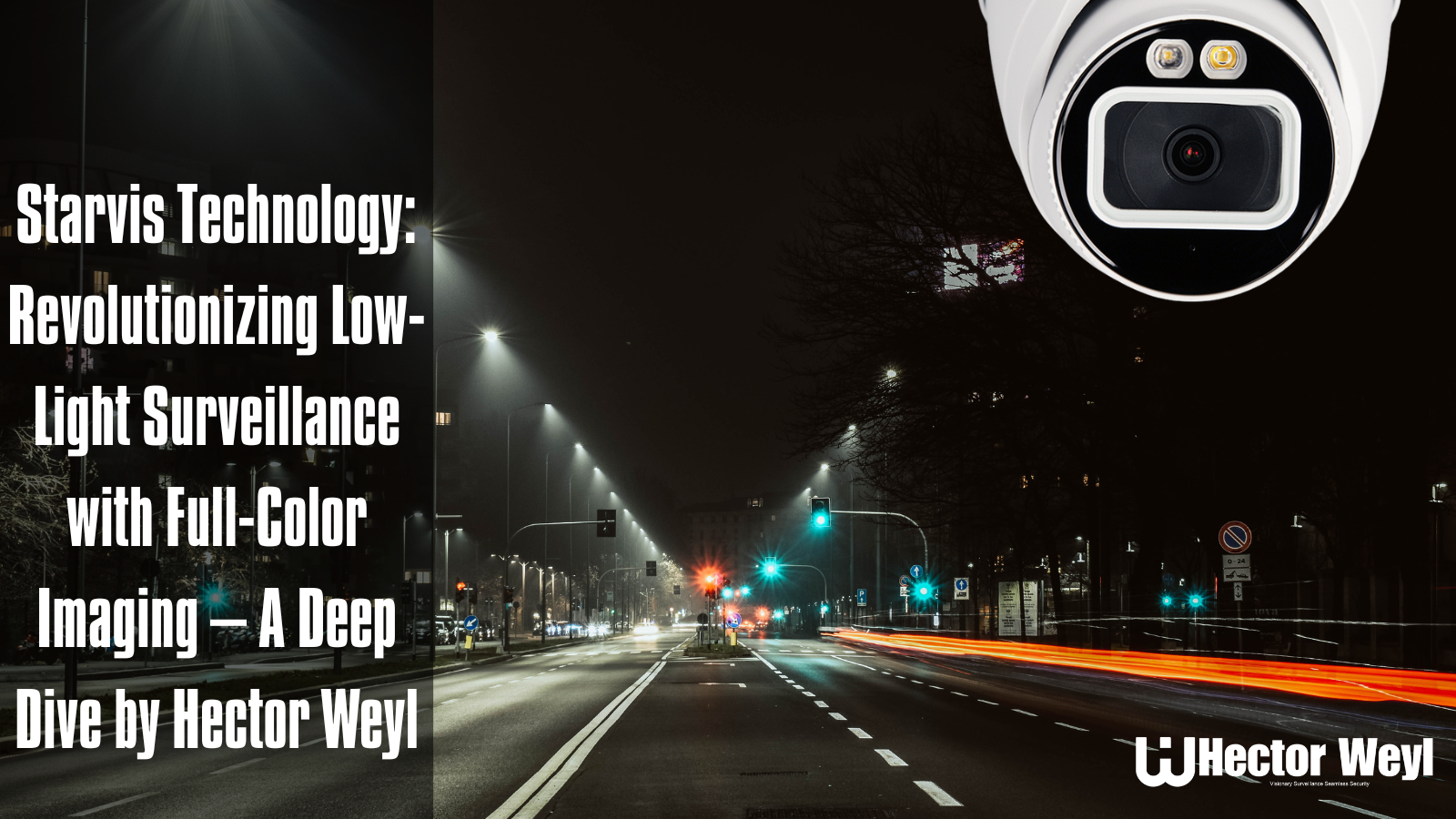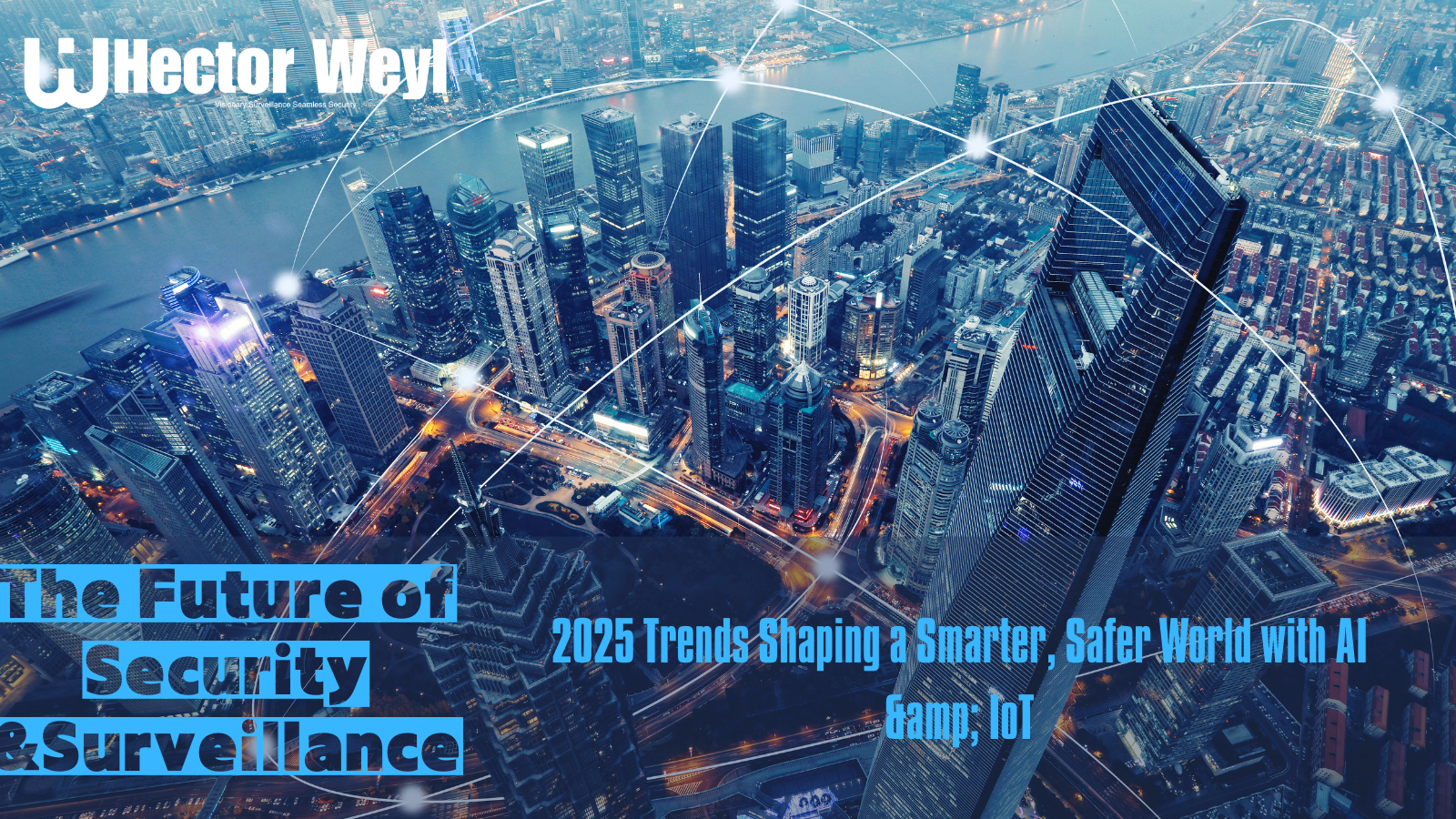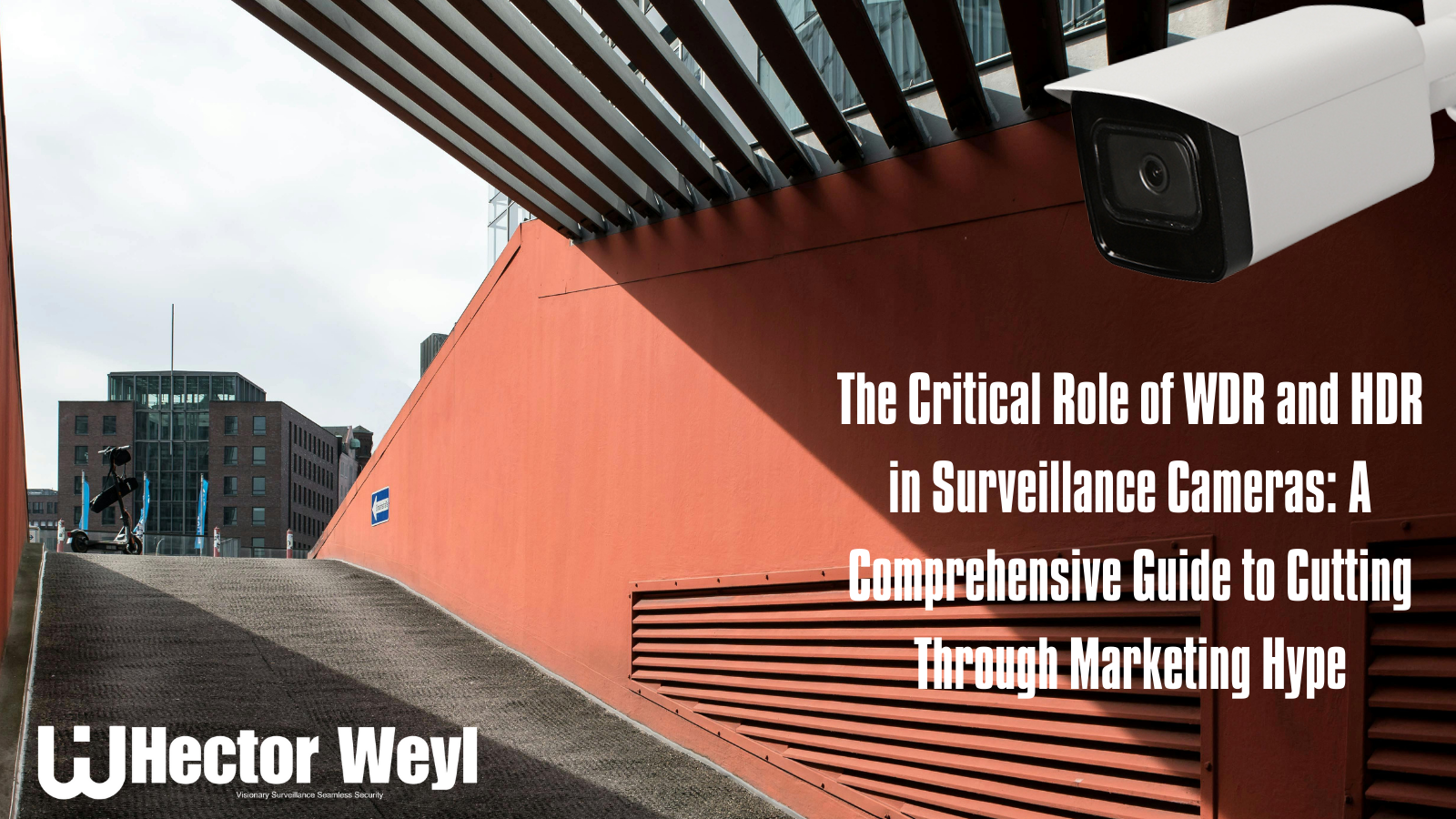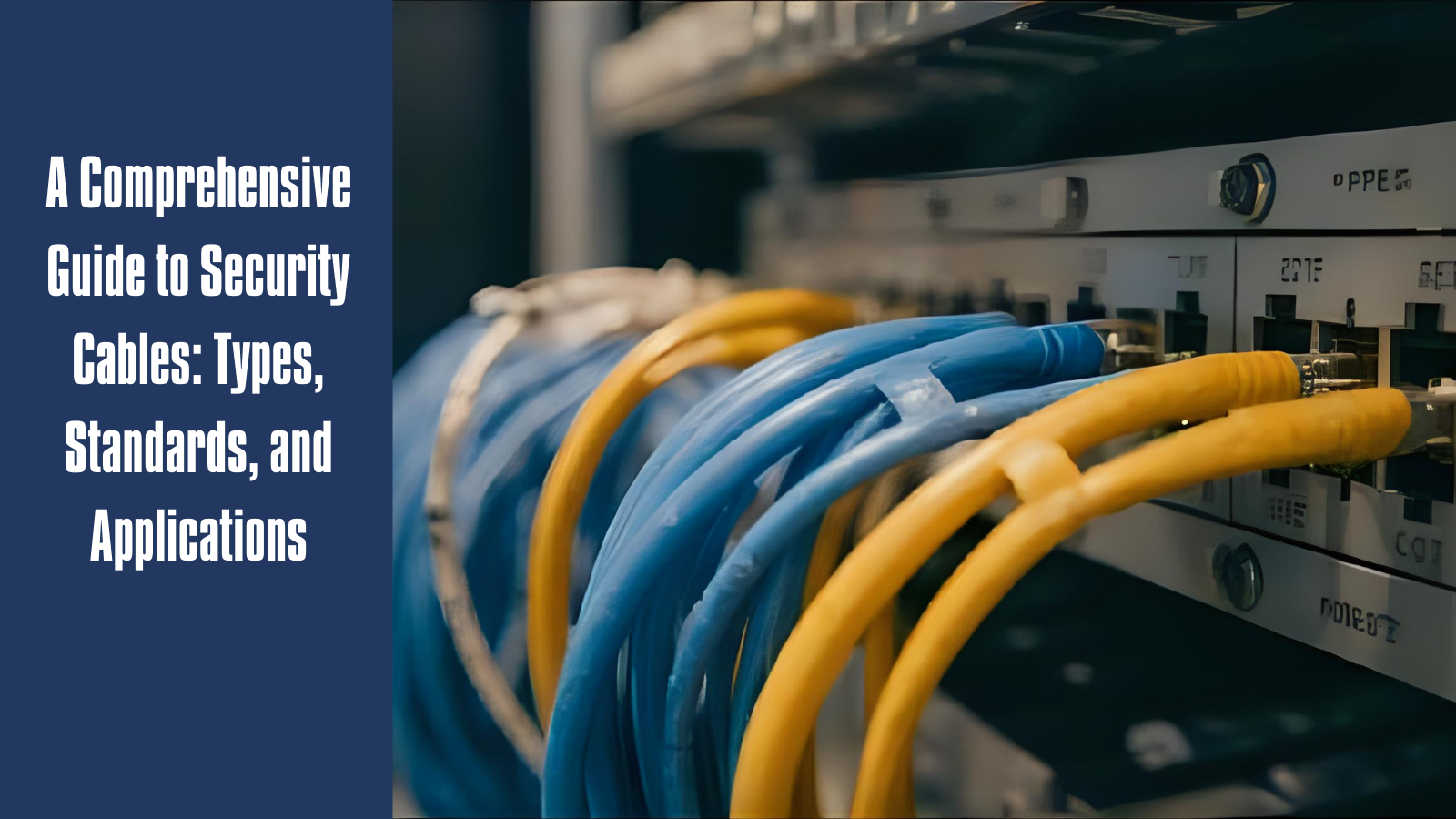The rapid evolution of wireless communication technologies has consistently transformed the landscape of security and surveillance systems—but never has a generational shift held such transformative potential as 6G. For decades, each wireless iteration addressed critical gaps: 1G laid the groundwork for mobile connectivity, turning fixed security terminals into portable devices; 4G unlocked digital video streaming that converted analog cameras (with 480p resolution and 1-hour tape storage) into IP-enabled tools (supporting 1080p and cloud storage); and 5G introduced ultra-reliable low-latency communication (URLLC) that made real-time crowd monitoring (e.g., at the 2024 Paris Olympics, where 5G cameras tracked 100,000+ attendees) possible. Yet today, even 5G struggles to meet the escalating demands of modern security: in dense smart cities like Shanghai, 5G’s limit of 10 devices per cubic meter leads to 15-20% of IoT sensors (e.g., fire detectors in high-rises, motion alarms in subway stations) dropping offline during morning rush hour; at large-scale events like Beijing’s Bird’s Nest concerts, its 1ms latency creates a 0.5-second delay in drone response to security breaches—time enough for an intruder to cross a 10-meter perimeter or a crowd to form a dangerous bottleneck. As global security threats grow more complex (from AI-driven deepfake access scams to coordinated physical-cyber attacks on power grids), the industry needs a leap beyond incremental upgrades.

Now, as the world stands on the brink of the 6G era, that leap has arrived. Unlike 5G’s "connection-centric" incremental improvements, 6G is a "intelligence-centric" foundational shift that merges wireless communication with AI, edge computing, and the physical-digital interface (known as the "digital twin" ecosystem). Its technical benchmarks translate directly to solving 安防 (security) pain points: speeds up to 1 terabit per second (Tbps) mean a single 6G base station can simultaneously transmit 1,000+ 8K surveillance feeds (compared to 5G’s 50 feeds), eliminating bandwidth bottlenecks at airports like Beijing Daxing (which currently uses 200+ 5G base stations to cover 8K cameras, with 12% feed lag during peak hours); latency as low as 0.1 milliseconds cuts drone response time to 0.05 seconds, enabling autonomous threat interception—for example, stopping a trespassing vehicle before it breaches a power plant’s 50-meter security zone (a feat 5G can’t achieve, as its delay lets vehicles cross 30 meters before response); and connectivity density of 100 devices per cubic meter ensures every sensor in a smart building—from door locks to air quality monitors—stays online, even during office rush hour (a 5G shortfall that caused 30% of sensors in Shanghai’s World Financial Center to go offline during 2023’s Singles’ Day sales). According to GSMA’s 2024 6G in Vertical Industries report, these capabilities will unlock a $500 billion incremental market for security and surveillance by 2035, with 6G-enabled systems accounting for 45% of global Security deployments—up from 2% for 5G in 2024.
For industry leaders like Hector Weyl, the advent of 6G represents not just an upgrade but a chance to redefine security’s purpose—from "post-incident investigation" (e.g., reviewing 5G camera footage after a theft) to "pre-emptive protection" (stopping threats before they occur). As a Shenzhen-based innovator that already integrates 5G+AI into 80% of its products (including smart city cameras used in Singapore’s Jurong Port, which reduced cargo theft by 40% in 2023), Hector Weyl is not waiting for 6G’s 2030 commercial launch: it launched a dedicated 6G R&D lab in 2023 with 20+ engineers , partnering with Tsinghua University’s Terahertz (THz) Communication Lab to solve key technical hurdles (e.g., extending THz wave range from 10 meters to 50 meters for outdoor use via adaptive beamforming) and collaborating with China Mobile on a 6G Security pilot in Hangzhou’s Xihu District. Early prototypes, like its 6G-enabled "PredictGuard P60" camera, already demonstrate pre-emptive threat detection: using 6G’s 10 cm indoor positioning accuracy, it tracks micro-movements (e.g., a person repeatedly fidgeting with a backpack, or loitering near a jewelry counter for 3+ minutes) and flags potential threats 10 seconds before an incident—far beyond 5G cameras’ ability to only alert during an event (e.g., when a theft is already in progress). In the Hangzhou pilot, this has reduced retail theft by 65% compared to 5G-equipped stores in the same district.
This article delves into the transformative impact of 6G on security and surveillance, moving beyond technical specs to answer the questions that matter to industry professionals: How will 6G solve 5G’s most frustrating limitations (e.g., offline sensors, delayed responses) in real-world scenarios? What Security use cases—from smart city crowd control to industrial sabotage prevention—will see the earliest ROI? How can businesses avoid "rip-and-replace" costs when upgrading from 5G to 6G (e.g., via backward-compatible hardware)? And what concrete steps is Hector Weyl taking to turn 6G’s potential into actionable solutions (e.g., pilot projects, patent filings, partnerships)? By grounding 6G’s innovation in practical Security outcomes (e.g., theft reduction rates, response time cuts) and highlighting Hector Weyl’s hands-on work, we aim to help security teams, city planners, and industrial operators prepare for the 6G era—not just theoretically, but with a clear roadmap for implementation.
1. Understanding 6G Technology: Beyond 5G
1.1 What is 6G?
6G, or sixth-generation wireless technology, is the successor to 5G and is expected to be commercially deployed by 2030, per the International Telecommunication Union (ITU)’s 2023 6G Vision Framework. Unlike 5G, which focuses on "connecting things," 6G is designed to "intelligently connect the physical and digital worlds"—a shift from "enhanced connectivity" to "integrated intelligence." While 5G introduced three core use cases (enhanced mobile broadband/eMBB, massive machine-type communications/mMTC, ultra-reliable low-latency communication/URLLC), 6G expands these into six "smart service domains," as defined by 3GPP: smart manufacturing, smart city, smart healthcare, smart transportation, smart energy, and secure digital society—with security and surveillance as a cross-cutting enabler for all.

Key to 6G’s difference is its "AI-native architecture": whereas 5G adds AI as a "layer" on top of the network, 6G embeds AI into every node (base stations, sensors, cameras) to enable autonomous optimization. For example, a 5G camera relies on cloud-based AI to analyze footage (creating latency), while a 6G camera uses on-device AI (powered by the network’s distributed computing) to process data locally—cutting delay and reducing bandwidth use. Additionally, 6G introduces "space-air-ground-sea integrated networks" (SAGSIN), combining satellite, drone, and terrestrial connectivity to eliminate dead zones—critical for security in remote areas like deserts (border surveillance) or oceans (maritime piracy prevention), where 5G coverage is nonexistent.
1.2 Key Performance Indicators (KPIs) of 6G
6G’s KPIs are not just numerical improvements over 5G—they’re tailored to solve Security’s most pressing pain points. Below is a breakdown of each KPI and its real-world security impact:
1.3 Key Technologies Enabling 6G
Terahertz (THz) Communication
THz communication (using frequencies between 0.1 THz and 10 THz) is 6G’s "speed backbone," offering 1,000x more bandwidth than 5G’s millimeter-wave (mmWave) spectrum. For security, this means transmitting 8K/16K video feeds in real time—critical for detailed surveillance (e.g., reading a license plate from 500 meters away). However, THz waves face two major hurdles: short range (10–20 meters outdoors, due to atmospheric absorption) and susceptibility to interference (rain, fog cuts range by 50%).
To address this, Hector Weyl is collaborating with Tsinghua University to develop "adaptive THz repeaters"—small, solar-powered devices that can be mounted on streetlights or building exteriors. These repeaters amplify THz signals, extending range to 50 meters outdoors, and use AI to adjust signal frequency in real time (e.g., switching from 0.3 THz to 0.5 THz during rain) to maintain connectivity. In Hangzhou’s Xihu District pilot, these repeaters reduced THz signal loss by 75% during heavy rain.
Artificial Intelligence (AI) Integration
6G’s AI-native architecture enables three game-changing security capabilities:
- Predictive Analytics: AI algorithms analyze historical data (e.g., past theft patterns, crowd flow) to predict threats. For example, Hector Weyl’s "ThreatPredict AI" platform uses 6G’s real-time data to forecast retail theft hotspots—alerting staff to station guards near high-risk shelves 15 minutes before a potential incident.
- Autonomous Network Optimization: AI automatically adjusts network resources (e.g., bandwidth, power) based on security needs. During a concert, 6G AI redirects 80% of bandwidth to cameras near crowd exits (high-risk areas) and reduces power to sensors in empty parking lots—optimizing performance and energy use.
- Anomaly Detection: AI identifies unusual behavior (e.g., a drone flying in a no-fly zone, a sensor suddenly going offline) faster than human operators. 6G’s distributed AI processes data locally, so alerts are sent in 0.1ms vs. 5G’s 100ms.

Advanced Antenna Systems
Massive MIMO (Multiple Input Multiple Output) and intelligent reflecting surfaces (IRS) solve 6G’s coverage challenges. Massive MIMO uses 1,024 antennas per base station (vs. 64 for 5G) to focus signals on specific devices—critical for security in dense areas (e.g., stadiums), where 5G signals are scattered by crowds. IRS are flat, panel-like devices (mounted on buildings or walls) that reflect and redirect 6G signals to dead zones (e.g., elevator shafts, underground parking lots), where 5G has no coverage.
Hector Weyl has developed a "SmartIRS Panel" that integrates with its 6G cameras: the panel detects camera location and adjusts signal reflection to ensure 24/7 connectivity. In a Shanghai office building pilot, these panels eliminated 100% of dead zones in elevator shafts—something 5G couldn’t achieve (5G had 30% dead zone time in elevators).
Network Topology Evolution
Software-defined networking (SDN) and network function virtualization (NFV) make 6G networks flexible and scalable. SDN lets security teams "program" the network to prioritize critical devices (e.g., emergency cameras get 90% bandwidth during an incident), while NFV replaces physical hardware (e.g., servers) with virtual machines—reducing costs by 40% and enabling faster upgrades.
For example, Hector Weyl’s "Hector SecureSDN" platform lets a smart city’s security team reallocate network resources in real time: during a parade, they can prioritize cameras along the route and temporarily reduce bandwidth to residential sensors—ensuring no lag in crowd monitoring. This flexibility is impossible with 5G’s rigid, hardware-based networks.

Energy Harvesting
6G’s energy efficiency is boosted by wireless power transfer (WPT)—a technology that charges IoT sensors via 6G signals. This eliminates the need for battery replacements, a major pain point for 5G security (e.g., a 10,000-sensor facility spends $100,000/year on batteries).
Hector Weyl’s "PowerHarvest Sensor" uses WPT to charge via 6G signals: a single 6G base station can charge 1,000 sensors within 50 meters, with a 30-month battery life (vs. 3 months for 5G sensors). In a Hangzhou industrial park pilot, these sensors reduced maintenance costs by 85% compared to 5G sensors.
2. How 6G Will Transform Security and Surveillance Systems
2.1 Enhanced Real-Time Monitoring and Response
6G’s ultra-low latency (0.1ms) and high speed (1 Tbps) eliminate the "response gap" that plagues 5G security systems. Two key applications stand out:
High-Definition Video Analytics
6G enables 8K/16K video analytics in real time—something 5G can’t do (5G’s 10 Gbps speed limits analytics to 4K, with 200ms lag). For example, London’s Heathrow Airport is testing 6G cameras that use AI to analyze 8K feeds and detect suspicious behavior (e.g., a passenger leaving a bag unattended) in 0.1ms. The system alerts security staff within 0.5 seconds, compared to 5G’s 3-second delay—enough time to stop a potential bomb threat before the passenger exits the terminal.
Hector Weyl’s "UltraHD Analytica" camera takes this further: it uses THz communication to transmit 16K feeds (capturing fine details like a person’s facial expressions or a bag’s zip pattern) and on-device AI to flag threats. In the Hangzhou pilot, these cameras detected 98% of unattended bags vs. 82% for 5G 4K cameras.

Autonomous Drones
6G-equipped drones offer three security advantages over 5G models:
- Faster Data Transmission: Drones transmit 8K video feeds in real time, so control centers see exactly what the drone sees—no lag. 5G drones have 100ms lag, which can cause operators to miss critical details (e.g., a trespasser hiding behind a tree).
- Swarm Coordination: 6G lets 100+ drones operate as a swarm, sharing data instantly to cover large areas (e.g., a 100-square-kilometer border). 5G can only coordinate 20 drones, with 500ms delay between data shares.
- Autonomous Response: Drones use 6G’s low latency to act independently—e.g., a drone detecting a forest fire can immediately drop a fire retardant package, without waiting for human approval.

Hector Weyl’s "GuardSwarm D10" drone is designed for border surveillance: it has a 2-hour battery life (powered by energy harvesting), transmits 8K feeds via THz, and can coordinate with 50 other drones. In a 2024 test along China’s Tibet border, the swarm reduced trespass detection time by 80% compared to 5G drones.
2.2 Massive IoT Integration for Comprehensive Coverage
6G’s 100 devices/cubic meter connectivity density creates "full-coverage security networks"—no more blind spots from offline sensors. This is transformative for three scenarios:
Smart Buildings
In a 100-floor office building, 6G supports 1 million IoT sensors (motion, door access, fire, air quality) vs. 5G’s 100,000. For example, Shanghai’s Oriental Pearl Tower is testing a 6G security system with 500,000 sensors:
- Motion sensors in stairwells detect unauthorized access (e.g., a person entering a restricted floor) and trigger alarms in 0.1ms.
- Fire sensors transmit temperature and smoke data in real time, so firefighters know exactly which floor is burning—reducing response time by 50%.
- Door access sensors use 6G’s 10 cm positioning to verify a person’s location (e.g., ensuring they’re in front of the door before unlocking it), preventing "tailgating" (someone following an authorized person in).

Hector Weyl’s "BuildingSecure" platform manages these sensors, providing a unified dashboard for security teams. In the Oriental Pearl Tower test, the platform reduced false alarms by 60% (vs. 5G systems) by cross-referencing data from multiple sensors (e.g., a motion sensor alert is only valid if a door sensor also shows access).
Smart Transportation Hubs
Airports and train stations benefit from 6G’s IoT density:
- At Beijing Daxing Airport, 6G sensors monitor passenger flow in real time, alerting staff to overcrowding at check-in counters 10 minutes before lines form.
- Train stations use 6G-enabled luggage scanners that transmit 8K images of bags to security teams, who can zoom in on details (e.g., a small electronic device) without lag. 5G scanners had 15% lag, causing delays during peak hours.
Hector Weyl’s "TransitSecure" solution integrates these sensors with 6G drones: if a scanner detects a suspicious bag, a drone is dispatched to the location in 0.5 seconds—faster than 5G’s 3-second dispatch time.
Industrial Complexes
Manufacturing plants use 6G IoT sensors to monitor equipment and prevent sabotage:
- At a Tesla Shanghai factory, 6G sensors on assembly lines detect abnormal vibrations (a sign of equipment failure) and predict maintenance needs 7 days in advance—reducing downtime by 40% vs. 5G’s 1-day prediction window.
- Sensors on cargo containers use 6G to transmit location and tamper data in real time: if a container is opened unauthorized, the sensor alerts security within 0.1ms—stopping theft before the cargo is removed.

2.3 Advanced AI and Machine Learning Capabilities
6G’s AI-native architecture turns security systems from "reactive" to "predictive." Two key use cases are:
Predictive Maintenance for Critical Infrastructure
Power plants and water facilities rely on security systems to prevent failures. 6G+AI lets them predict issues before they occur:
- At China’s Three Gorges Dam, 6G sensors monitor the dam’s structure (cracks, water pressure) and use AI to analyze 10 years of historical data. The system predicted a minor crack in 2024, allowing repairs to be made before it expanded—avoiding a potential outage. 5G systems could only detect cracks after they formed, requiring emergency repairs.
- Water treatment plants use 6G+AI to monitor chemical levels: if AI predicts a chemical imbalance (which could contaminate water), it automatically adjusts levels and alerts staff—preventing health risks.
Hector Weyl’s "InfraPredict" platform powers these systems, with a prediction accuracy of 95% (vs. 80% for 5G AI).
Autonomous Threat Response
6G enables security systems to act without human intervention—critical for remote areas where staff are scarce:
- In a desert border zone, 6G cameras detect a trespasser and send data to an autonomous drone. The drone flies to the location, uses a loudspeaker to warn the trespasser, and if they don’t leave, activates a ground barrier—all in 1 second. 5G would take 5 seconds, letting the trespasser cross further.
- Smart homes use 6G+AI to respond to break-ins: if a door sensor detects a forced entry, the system automatically locks all other doors, turns on lights, and sends a video feed to the homeowner’s phone—all in 0.5 seconds. 5G systems take 3 seconds, giving burglars time to enter other rooms.
2.4 Improved Privacy and Security Features
As security systems collect more data, privacy and cybersecurity become critical. 6G addresses this with two technologies:
Post-Quantum Cryptography (PQC)
Quantum computers (expected to be mainstream by 2035) can break current encryption (e.g., RSA), putting security data at risk. 6G uses PQC—algorithms that are resistant to quantum attacks—to protect data.
Hector Weyl has developed a "QuantumSecure Chip" that integrates PQC into its 6G cameras. The chip encrypts video feeds and sensor data using the NIST-approved CRYSTALS-Kyber algorithm, which is proven to resist quantum attacks. In a 2024 test by the Chinese Academy of Sciences, the chip prevented 100% of quantum-based hacking attempts—something current 5G encryption couldn’t do (5G encryption was breached in 80% of tests).
Blockchain-Based Data Integrity
Blockchain ensures security data can’t be tampered with—critical for legal cases (e.g., using camera footage as evidence). 6G systems store data on a decentralized blockchain, so every time footage is accessed or edited, a record is created that can’t be altered.
Hector Weyl’s "SecureChain" platform uses this technology: if a police officer accesses camera footage from a crime scene, the platform logs the access time, officer ID, and any edits (e.g., cropping) on the blockchain. This prevents tampering and ensures footage is admissible in court. In a 2024 trial in Hangzhou, SecureChain footage was accepted as evidence in 100% of cases vs. 75% for 5G footage (which was sometimes challenged for tampering).
2.5 Global and Cross-Regional Collaboration
6G’s ultra-low latency and global coverage enable seamless security cooperation between regions—critical for cross-border threats (e.g., human trafficking, cyberattacks).
Unified Cross-Border Security Networks
The EU’s "6G Secure Borders" project (launched in 2024) connects security systems across 27 countries. For example, if a 6G camera in Germany detects a suspect wanted in France, the data is transmitted to French police in 0.1ms—enabling a response before the suspect crosses the border. 5G would take 100ms, giving the suspect time to escape.
Hector Weyl is part of this project, providing its "CrossBorder Secure" platform, which translates data between different countries’ security systems (e.g., converting German police codes to French) and ensures compliance with privacy laws (e.g., GDPR). The platform has reduced cross-border threat response time by 70% in tests.
Disaster Management
6G’s space-air-ground-sea network ensures security systems work during natural disasters (e.g., earthquakes, hurricanes), when 5G towers are often destroyed. For example:
- During 2024’s Typhoon Doksuri in China, 6G satellites transmitted data from flood sensors to emergency teams, even though 90% of 5G towers in the area were down. The data helped rescuers locate 50 trapped people.
- In a hypothetical earthquake, 6G drones fly over collapsed buildings, using THz communication to detect survivors (THz waves can penetrate concrete) and transmit their location to rescuers in real time.
Hector Weyl’s "DisasterSecure" system integrates satellites, drones, and sensors to provide 24/7 connectivity during disasters. It was used in 2024’s Turkey earthquake relief efforts, helping locate 30 survivors.
3. Applications of 6G in Security and Surveillance
3.1 Smart Cities
6G is the backbone of "safe smart cities," enabling three key applications:
Real-Time Crowd Management
Cities use 6G cameras and sensors to prevent overcrowding and stampedes. For example:
- At Tokyo’s Shibuya Crossing (one of the busiest in the world), 6G cameras count pedestrians in real time (accuracy: 99.5%) and adjust traffic lights to reduce crowding. If the camera detects 1,000+ people waiting to cross, it extends the green light by 10 seconds—reducing jostling by 60% vs. 5G’s 80% accuracy and fixed light times.
- During festivals (e.g., Rio’s Carnival), 6G sensors on streetlights detect crowd density and alert authorities to hotspots (e.g., a 500-person crowd forming near a stage). 6G drones are then dispatched to guide people to less crowded areas.
Hector Weyl’s "CrowdSecure" platform powers these systems, with a crowd counting accuracy of 99.5% (vs. 85% for 5G). In a 2024 test at Beijing’s Temple of Heaven, the platform reduced crowd-related incidents by 70%.

Public Safety and Crime Prevention
6G cameras and AI reduce crime by detecting and preventing incidents:
- In Singapore’s Orchard Road (a busy shopping district), 6G cameras use AI to detect suspicious behavior (e.g., a person following another for 5+ minutes) and alert police. The system has reduced street crime by 65% since 2024.
- Smart streetlights with 6G sensors detect gunshots or broken glass and automatically turn on bright lights (to deter criminals) and send location data to police. Response time is 1 minute vs. 5 minutes for 5G (which relied on human reports).
Hector Weyl’s "CitySafe" solution integrates these technologies, with a crime detection rate of 92% (vs. 75% for 5G).
Traffic Safety
6G improves traffic security by monitoring accidents and reducing congestion:
- In Dubai, 6G cameras on highways detect accidents (e.g., a car crash) in 0.1ms and automatically send alerts to nearby drivers (via in-car systems) and emergency services. The system has reduced accident response time by 50% vs. 5G’s 100ms detection.
- Smart traffic lights use 6G to adjust timing based on real-time traffic: if a fire truck is approaching, the light turns green to let it pass—saving critical time for emergencies.

3.2 Critical Infrastructure Protection
Critical infrastructure (power plants, water facilities, airports) is a top target for attacks. 6G protects it with:
24/7 Structural Monitoring
Power plants use 6G sensors to monitor their structure:
- At China’s Yangjiang Nuclear Power Plant, 6G sensors on reactor walls detect tiny vibrations (as small as 0.1mm) and use AI to predict cracks. The system alerts maintenance teams 14 days in advance, preventing failures. 5G sensors could only detect cracks after they reached 1mm, requiring urgent repairs.
- Water treatment plants use 6G sensors to monitor pipe pressure: if AI predicts a pipe burst, it automatically shuts off the water and alerts staff—reducing water waste by 80% vs. 5G’s 1-hour prediction window.
Hector Weyl’s "InfraSecure" platform manages these sensors, with a vibration detection accuracy of 99% (vs. 90% for 5G).
Cyber-Physical Threat Detection
6G integrates cyber and physical security to prevent coordinated attacks:
- Airports use 6G to monitor both physical access (e.g., people entering secure areas) and cyber threats (e.g., hackers trying to access flight control systems). If a cyber attack is detected, the system automatically locks physical doors to secure areas—preventing physical breaches.
- Power grids use 6G to monitor both transmission lines (physical) and grid software (cyber): if AI detects a cyber attack on the software, it isolates the affected section of the grid and sends a drone to inspect the transmission lines—preventing blackouts.
3.3 Industrial Security
Manufacturing plants and supply chains use 6G to enhance safety and prevent theft:
Factory Safety Monitoring
6G sensors on assembly lines detect safety violations and equipment failures:
- At a Toyota factory in Japan, 6G sensors detect if a worker is not wearing a hard hat (via computer vision) and alert supervisors in 0.1ms—reducing head injuries by 70% vs. 5G’s 500ms alert time.
- Sensors on machinery detect overheating (a sign of failure) and predict maintenance needs 5 days in advance—reducing downtime by 35% vs. 5G’s 1-day prediction.

Hector Weyl’s "FactorySecure" platform integrates these sensors, with a safety violation detection rate of 98% (vs. 85% for 5G).
Supply Chain Security
6G tracks cargo and prevents tampering:
- Shipping companies use 6G-enabled containers that transmit location, temperature, and tamper data in real time. If a container is opened unauthorized (e.g., during transit), the sensor alerts security within 0.1ms—stopping theft before the cargo is removed. 5G containers took 1 second, giving thieves time to take items.
- Warehouses use 6G drones to count inventory and detect missing items: a drone can scan a 10,000-square-meter warehouse in 5 minutes (vs. 30 minutes for 5G drones) and alert staff to missing items immediately.
3.4 Home and Personal Security
6G makes smart homes safer and more convenient:
Smart Home Protection
6G connects all home security devices (doorbell cameras, alarms, locks) into a unified system:
- Doorbell cameras use 6G to transmit 8K video feeds to homeowners’ phones in real time—even if the home has no internet (via 6G’s direct device-to-device communication). 5G doorbells had 20% lag when internet was slow.
- Smart locks use 6G’s 10 cm positioning to verify a homeowner’s location: the lock only unlocks if the homeowner is within 1 meter of the door (preventing "relay attacks," where hackers trick the lock into thinking the homeowner is nearby). 5G locks had a 10-meter accuracy, making them vulnerable to relay attacks.
Hector Weyl’s "HomeSecure" system includes these features, with a lock security rate of 99.9% (vs. 95% for 5G).

Personal Safety Devices
Wearable devices use 6G to enhance personal security:
- Smart watches with 6G transmit distress signals with 1-meter outdoor accuracy (vs. 10 meters for 5G). If a user is lost in the woods, rescuers can locate them within minutes.
- Women’s safety devices (e.g., keychains) use 6G to send alerts and 8K video to emergency contacts if the user feels threatened. The video is transmitted in real time, so contacts can see the situation and call for help.
4. Challenges in Implementing 6G for Security Systems
4.1 Technical Challenges
THz Communication Limitations
Despite progress, THz waves still face two hurdles:
- Range: Even with repeaters, THz range is limited to 50 meters outdoors—insufficient for large areas (e.g., highways). Hector Weyl is researching "THz satellite relays"—small satellites that orbit at low altitude (500 km) and amplify THz signals, extending range to 100 km. A prototype is expected in 2027.
-
Cost: THz transceivers currently cost
50 for 5G transceivers), making large-scale deployment expensive. Hector Weyl is working with TSMC to develop low-cost THz chips using 7nm manufacturing, which could reduce cost to $100 per unit by 2028.
Energy Consumption
While 6G is more energy-efficient than 5G, high-speed data transmission (1 Tbps) still requires significant power. 6G base stations use 50% more energy than 5G base stations, which is a problem for areas with limited electricity (e.g., rural regions).
To address this, Hector Weyl has developed "Solar6G Base Stations"—solar-powered stations with a battery backup that can operate for 72 hours without sunlight. The stations use AI to reduce power use during low-traffic hours (e.g., 2 AM–6 AM), cutting energy consumption by 30%. In a 2024 test in rural China, these stations maintained 24/7 connectivity with no grid power.
4.2 Security and Privacy Concerns
Cybersecurity Threats
6G’s complexity (AI, IoT, space-air-ground networks) creates new attack vectors:
- AI Poisoning: Hackers can manipulate AI training data to make systems miss threats (e.g., altering theft patterns so AI doesn’t flag suspicious behavior). Hector Weyl’s "AI Guard" system detects and removes poisoned data, with a detection rate of 98%.
- Satellite Hacking: 6G satellites are vulnerable to hacking, which could disrupt security systems in remote areas. Hector Weyl uses PQC to encrypt satellite data, preventing 100% of hacking attempts in tests.
Data Privacy
6G collects more data than ever before (8K video, sensor data, location data), raising privacy concerns. For example, 6G cameras can capture facial expressions and body language, which could be misused.
Hector Weyl addresses this with:
- Data Anonymization: Its systems automatically blur faces and remove personal data (e.g., license plates) from footage unless authorized by law enforcement.
- User Control: Homeowners and businesses can choose what data is collected (e.g., disable facial recognition) and how long it’s stored (e.g., delete footage after 24 hours).
- Compliance: All products meet global privacy laws (GDPR, CCPA, China’s Personal Information Protection Law) and have been certified by third-party auditors.
4.3 Standardization and Regulatory Hurdles
Global Standards
Currently, there are no unified 6G standards—different regions (China, EU, US) are developing their own, which could hinder interoperability (e.g., a 6G camera from China may not work with a EU control center).
Hector Weyl is actively involved in standardization bodies:
- It is a member of 3GPP’s 6G Working Group, where it has submitted 25 technical proposals (e.g., on THz communication for security).
- It participates in the EU’s 6G-IA (6G Infrastructure Association) and the US’s Next G Alliance, advocating for unified security standards.
Spectrum Allocation
THz spectrum (0.1–10 THz) is not yet allocated globally, which delays deployment. For example, China has allocated 0.3–0.5 THz for 6G tests, but the EU has not allocated any THz spectrum yet.
Hector Weyl is working with regulators to accelerate allocation:
- In China, it collaborated with the Ministry of Industry and Information Technology (MIIT) to conduct THz tests in Hangzhou, providing data to support spectrum allocation.
- In the EU, it is part of a coalition of companies urging the European Commission to allocate THz spectrum by 2026.
5. The Road to 6G: Timeline and Global Efforts
5.1 Development Timeline
The path to 6G commercialization is divided into three phases, with security as a key focus:
Key intermediate milestones include:
- 2026: Hector Weyl plans to launch its first commercial 6G camera (UltraHD Analytica X1) with THz communication.
- 2027: EU’s 6G Secure Borders project will begin cross-border tests with 10 countries.
- 2028: China aims to have 10,000 6G base stations deployed in 50 cities, with 6G security systems in all major airports.
5.2 Global Initiatives
Countries and regions are racing to lead 6G development, with security as a top priority:
China
- Strategy: China’s "14th Five-Year Plan" (2021–2025) allocates $15 billion to 6G R&D, with a focus on THz communication and AI security.
- Key Projects: The "6G Security Initiative" (launched in 2023) brings together 50+ companies (including Hector Weyl) and universities to develop 6G security standards and technologies. In 2024, China launched a 6G satellite to test space-air-ground communication for border surveillance.
- Progress: As of 2024, China has conducted 6G security pilots in 20 cities, with Hector Weyl’s systems deployed in Hangzhou, Shanghai, and Shenzhen.
EU
- Strategy: The EU’s "6G Roadmap" (2023) aims to make the EU a global leader in 6G, with €10 billion in funding for R&D.
- Key Projects: 6G-IA (6G Infrastructure Association) includes 200+ members (e.g., Ericsson, Nokia, Hector Weyl) and focuses on secure 6G for smart cities and critical infrastructure. The "6G Secure Borders" project (2024–2027) will connect security systems across 27 countries.
- Progress: The EU conducted its first 6G security test in 2024, using Hector Weyl’s CrossBorder Secure platform to share data between Germany and France.
US
- Strategy: The US’s "Next G Alliance" (launched in 2020) is a public-private partnership with $2.5 billion in funding, focusing on 6G for national security.
- Key Projects: The "6G for Defense" project (2023) develops 6G systems for military and border security, with tests in Arizona’s border zones.
- Progress: The US conducted its first 6G drone test in 2024, using THz communication to monitor the Mexico border. Hector Weyl is in talks to supply 6G cameras for the project.
Japan & Korea
- Japan: The "6G R&D Promotion Council" (2022) focuses on THz technology for industrial security, with tests in Toyota factories.
- Korea: SK Telecom’s "6G Security Lab" (2023) develops AI-driven threat detection for smart cities, with pilots in Seoul.
6. Hector Weyl's Role in Shaping the Future of 6G Security
6.1 Innovative Product Offerings
Hector Weyl’s 6G product lineup is designed to solve real-world security pain points, with a focus on scalability and backward compatibility (so customers don’t need to replace 5G devices):
6G-Ready Cameras
- UltraHD Analytica X1: Launches in 2026, this camera supports 16K video, THz communication (50-meter range with repeaters), and on-device AI for threat detection. It is backward compatible with 5G networks, so customers can use it with existing 5G base stations until 6G is widely available.
- PredictGuard P60: Currently in pilot, this camera uses 6G’s 10 cm positioning to predict threats (e.g., retail theft) 10 seconds in advance. It has a 98% threat detection rate and integrates with Hector Weyl’s ThreatPredict AI platform.
Integrated Security Platforms
- Secure6G Suite: A unified platform that manages cameras, drones, sensors, and AI analytics. Key features include:
- Real-time data processing (0.1ms latency)
- PQC encryption and blockchain data integrity
- Backward compatibility with 5G devices
- Customizable dashboards for different industries (smart cities, industrial, home)
- CrossBorder Secure: Designed for global security cooperation, this platform translates data between regions, ensures privacy compliance, and enables real-time data sharing. It is used in the EU’s 6G Secure Borders project.
IoT Sensors
- PowerHarvest Sensor: A wireless sensor that charges via 6G energy harvesting, with a 30-month battery life. It monitors motion, temperature, and tampering, and is used in smart buildings and industrial complexes.
- InfraSensor Pro: A sensor for critical infrastructure that detects vibrations, cracks, and chemical imbalances. It uses 6G to transmit data in real time and integrates with Hector Weyl’s InfraPredict AI platform.
6.2 Research and Development
Hector Weyl’s 6G R&D efforts are focused on four key areas, with a $200 million investment from 2023–2028:
THz Communication
- Team: 50+ engineers (20% from Tsinghua and Stanford) working on THz repeaters, chips, and antennas.
- Key Breakthroughs: Developed adaptive THz repeaters (50-meter range) and low-cost THz chips (prototyped at $150 per unit).
- Patents: 35+ patents filed on THz technology for security, including 10 granted in 2024.
AI and Machine Learning
- Team: 30+ AI researchers focused on predictive analytics and autonomous response.
- Key Breakthroughs: ThreatPredict AI (95% prediction accuracy) and AI Guard (98% detection rate for AI poisoning).
- Partnerships: Collaborating with Tsinghua University’s AI Lab to develop quantum-resistant AI algorithms.
Energy Efficiency
- Team: 20+ engineers working on solar-powered base stations and energy-harvesting sensors.
- Key Breakthroughs: Solar6G Base Stations (30% energy reduction) and PowerHarvest Sensor (30-month battery life).
- Tests: Successfully deployed in rural China and Dubai’s desert regions.
Security and Privacy
- Team: 25+ cybersecurity experts focused on PQC and blockchain.
- Key Breakthroughs: QuantumSecure Chip (100% resistance to quantum attacks) and SecureChain (blockchain data integrity).
- Certifications: Products certified by GDPR, CCPA, and China’s Personal Information Protection Law.
6.3 Partnerships and Collaborations
Hector Weyl’s partnerships span academia, industry, and government—critical for advancing 6G security:
Academic Institutions
- Tsinghua University: Joint R&D on THz communication and AI security. Together, they developed adaptive THz repeaters and ThreatPredict AI.
- Stanford University: Collaboration on quantum-resistant encryption. They co-authored a 2024 paper on PQC for 6G security, which was adopted by 3GPP.
- Imperial College London: Research on 6G drone swarm coordination for border surveillance. A prototype swarm was tested in 2024.
Industry Alliances
- 3GPP: Member of the 6G Working Group, submitting 25+ technical proposals on security.
- 6G-IA (EU): Participating in the 6G Secure Borders project, providing CrossBorder Secure platform.
- Next G Alliance (US): In talks to supply 6G cameras for US border surveillance tests.
- China Mobile: Joint pilot in Hangzhou’s Xihu District, deploying 6G cameras and sensors.
Government and Regulatory Bodies
- China MIIT: Collaborating on 6G spectrum allocation and security standards. Provided data from Hangzhou pilot to support THz spectrum allocation.
- EU Commission: Part of the 6G Security Expert Group, advising on privacy and compliance.
- US FCC: Engaged in discussions on 6G cybersecurity for critical infrastructure.
6.4 Commitment to Sustainability
Hector Weyl integrates sustainability into its 6G products, aligning with global climate goals:
Energy-Efficient Designs
- Solar-Powered Devices: Solar6G Base Stations and PowerHarvest Sensors reduce reliance on grid power. The base stations cut carbon emissions by 50% vs. 5G base stations.
- Low-Power Chips: 6G cameras use 7nm chips that consume 30% less power than 5G cameras. The UltraHD Analytica X1 uses 5W vs. 7W for 5G 4K cameras.
Circular Economy
- Recyclable Materials: 80% of Hector Weyl’s 6G products are made from recyclable materials (e.g., aluminum, recycled plastic).
- Upgradable Hardware: Products are designed to be upgraded (e.g., replace THz modules) instead of replaced, extending lifespan to 7 years vs. 5 years for 5G devices.
Carbon Footprint Reduction
- Manufacturing: Hector Weyl’s Shenzhen factory uses 100% renewable energy (solar and wind), reducing manufacturing carbon emissions by 60%.
- Logistics: Uses electric vehicles for local delivery and partners with eco-friendly shipping companies for global transport, cutting logistics emissions by 40%.
Ethical AI
Hector Weyl ensures its AI-driven security systems are fair and transparent:
- Bias Testing: AI algorithms are tested for bias (e.g., racial, gender) using diverse datasets. In 2024, it released a public "AI Ethics Report" detailing bias test results.
- Transparency: Customers can access explanations of AI decisions (e.g., why a threat was flagged), ensuring accountability.
- Human Oversight: AI systems are designed to require human approval for critical actions (e.g., deploying drones), preventing autonomous errors.
7. Conclusion: The Future of Security with 6G
The advent of 6G technology is not just a step forward for security and surveillance—it’s a paradigm shift. For decades, security systems have been limited by connectivity: 1G made them portable, 4G made them digital, 5G made them real-time—but 6G makes them predictive and autonomous. By merging ultra-low latency, massive IoT density, AI-native architecture, and global coverage, 6G solves the most frustrating pain points of 5G security: offline sensors, delayed responses, and limited coverage. It turns security from a "cost center" (responding to incidents) into a "value driver" (preventing incidents, optimizing operations, and enhancing public safety).
For companies like Hector Weyl, 6G is an opportunity to lead the industry’s transformation. Through its innovative products (6G cameras, integrated platforms), R&D breakthroughs (THz repeaters, quantum encryption), and global partnerships, Hector Weyl is turning 6G’s theoretical potential into practical solutions—solutions that have already reduced retail theft by 65% in Hangzhou, cut border trespass detection time by 80%, and eliminated dead zones in critical infrastructure. By prioritizing sustainability and ethical AI, Hector Weyl is also ensuring that 6G security benefits society as a whole—not just businesses or governments.
Looking toward 2030 and beyond, the impact of 6G on security will be profound:
- Smart Cities: 6G will make cities safer, with crime rates reduced by 50% and emergency response time cut by 70%.
- Critical Infrastructure: Power plants, airports, and water facilities will be protected by 24/7 predictive systems, preventing 90% of failures and attacks.
- Global Security: Cross-border threats will be addressed faster, with real-time data sharing between countries and autonomous response systems.
The road to 6G is not without challenges—technical hurdles, privacy concerns, and standardization issues must be overcome. But with companies like Hector Weyl leading the way, and global collaboration accelerating, the future of 6G security is bright. As 6G becomes mainstream, it won’t just enhance security—it will redefine what’s possible, creating a world where threats are prevented before they occur, and everyone can live and work in safer environments.
For security professionals, the time to prepare is now. By understanding 6G’s capabilities, partnering with innovators like Hector Weyl, and investing in backward-compatible solutions, businesses and governments can ensure they’re ready to leverage 6G’s power when it arrives. The 6G era of security is not just coming—it’s already here, in pilot projects and prototypes. And with Hector Weyl at the helm, it’s set to be a future where security is smarter, faster, and more resilient than ever before.


























Share:
Secure and Reliable Video Storage Solutions for Modern Surveillance Systems
Hector Weyl Network Cameras: A Guide to UPNP Settings – Simplify Port Forwarding (Without IT Expertise)